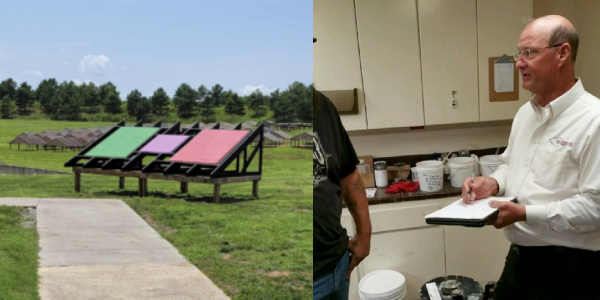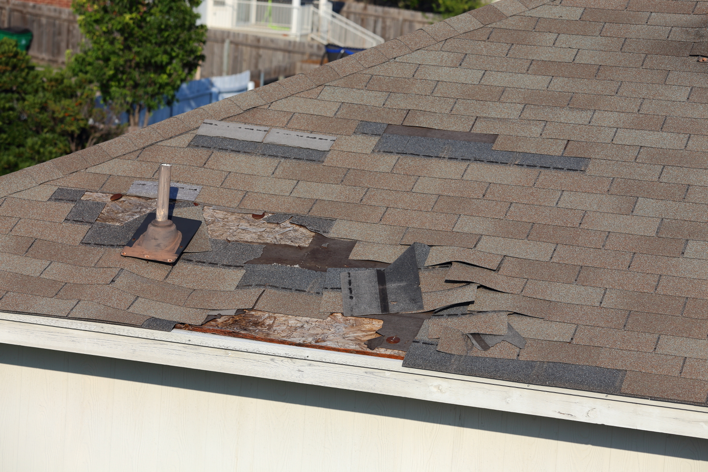6 Roof Coating Ratings and Standards You Must Know

By Western Colloid.
Here’s everything you need to know about roof coating system approvals, ratings, standards and building codes.
Have you ever seen an acronym or number on a roofing product and wondered what they all mean? These often indicate that the product is regulated and approved by various industry standards. In the past, the roof coating industry lacked any kind of testing on the products available and there was not enough regulation. That’s why Western Colloid and other roof coating industry pioneers have spearheaded efforts over the last 30 years to seek approvals and standards for the products on the market.
Building owners and specifiers now have the confidence that they can use products that have been tested, with the same rigorous methods that single-ply, modified bitumen, built-up roofs have been using for years. So how is the industry evaluated? Here are six roof coating ratings and standards you need to know:
1 - FM Global
Factory Mutual (FM) Global, is one of the largest insurance carriers in the world. FM Global was founded in 1835. FM Global is a Fortune 500 company, they insure over $10 trillion worth of properties globally, in 130 countries with 6,000 employees worldwide. Their research campus in West Gloucester, Rhode Island is 1600 acres and is the most sophisticated center for advancing the science of property loss prevention. There are other testing and evaluating agencies, but FM Global is considered the gold standard.
One of the reasons FM has gone beyond their insurance capabilities is because of the nature of the insurance claims and because nobody was testing roofs to their comfort level. They started doing testing decades ago, and now they’re not just looked at as a testing center. Whether you are insured by FM Global or not, the fact that you pass an FM standard is the highest form of approval. You don’t necessarily have to have an FM insured building to have an FM approved roof.
15 years ago, Western Colloid began going to FM Global to start testing some of our roof system assemblies. We began with our polyester-reinforced, all acrylic systems to compete with some of the largest manufacturers in the world. Today Western Colloid has most of our systems/assemblies accredited under the FM4470 standard at FM Global, which we are very proud of.
The approval process is not an easy one. It involves being assigned an engineer, designing assemblies, scheduling the build, building them, coming back 28 days later and then doing the destructive testing to pass with these assemblies. One failed test puts you back to step 1.
It says a lot about a company to make the commitment it takes to having that FM approvals mark on your products. If your product has an FM approved mark, that means it’s been through the certification testing process to verify its function as intended.
FM makes required visits to your manufacturing facilities to make sure that you manufacture the exact same products. We have inspectors at our plants who test our products and make sure the formulas are the same. The re-testing involves checking everything from raw material certificates of analysis to testing equipment to checking formulations on every batch.
The FM Diamond approval gives you access to consultants, architects, specifiers and building owners throughout the United States, and globally. FM Global approval also grants you easier approvals from other agencies. Underwriters Laboratories, (UL), and Miami Dade will accept FM’s results. ICC-ES will also follow FM’s testing, manufacturing process and certifications.
2 - ICC-ES
The International Code Council Evaluation Service (ICC-ES) created standards about buildings and structures. Roofing is only a small, although an important, part of ICC-ES. They create the standards that gets factored into what should be accepted for a flat roof, such as minimum pitch and what materials are acceptable. Most local municipalities, cities, counties and states create their own building codes, but they don’t always write it themselves. Most go to ICC-ES and refer to their standards.
In the approval process and permitting process, there’s usually a box for the ICC-ES number that they are using. An applicant can just check the box, put the number in and he’s done. ICC-ES smooths the way for city officials that are approving these projects. They want to know that you’ve spent the money and time to get that number.
3 - ASTM
The American Society for Testing and Materials (ASTM) establishes the codes for most chemistries in world. For example, ASTM standards test your carpet down to the fiber on strength, materials, performance and/or the machines that are used to produce them.
4 - UL
Underwriters Laboratories (UL) is the most recognized source for testing, inspection and certification services in the world. Western Colloid, for example, has UL certification for our Class A fire rating on most products and systems.
5 - CRRC
The Cool Roof Rating Council (CRRC) offers product ratings for companies who want their roofing products listed and labeled with information about their surface radiative performance. Any roofing product can be rated as long as it is in compliance with the CRRC-1 Product Rating Program Manual.
Energy Star used to be the mark of approval for cool roof systems, but CRRC has now stepped in as the authority on that. Energy Star has now retired their mark of approval, the Energy Star program, for roof coatings. They just didn’t see the value in it currently, but Western Colloid is hoping to change that in the future.
The process you go through with these agencies can total hundreds of thousands of dollars, millions for some companies. This is all to give the building owner a comfort level that the materials and systems they are installing have some regulation and testing with a supporting foundation kept in check. Each agency does its part of covering the entire scope of roof systems.
How much should a building owner know about these requirements? This is where consultants and architects come in. They do a deeper dive into the information out there, so the building owner doesn’t have to. Sometimes the work being performed does not fit into an existing standard or code. That is why it is important to have the approval and ratings backup with FM and UL. We can provide a comfort level that their roof restoration is going to perform, even though it doesn’t match any existing criteria.
The main point with approvals and ratings is it gives the building owner confidence in the quality and the performance of the product. As you can imagine Western Colloid is very proud of our outstanding testing, approvals and ratings. The management team has been on the forefront over the years in getting the roof coatings industry recognized and approved and we will continue to keep these agencies apprised of new technologies.
We are committed to our ongoing commitment to the approval and testing process. Once you’re in, you’re in for life!
Please contact Western Colloid to learn more about our testing and results.
Have a question? AskARoofer.
Find your local roofing contractor in the RoofersCoffeeShop® Contractor Directory.










Comments
Leave a Reply
Have an account? Login to leave a comment!
Sign In